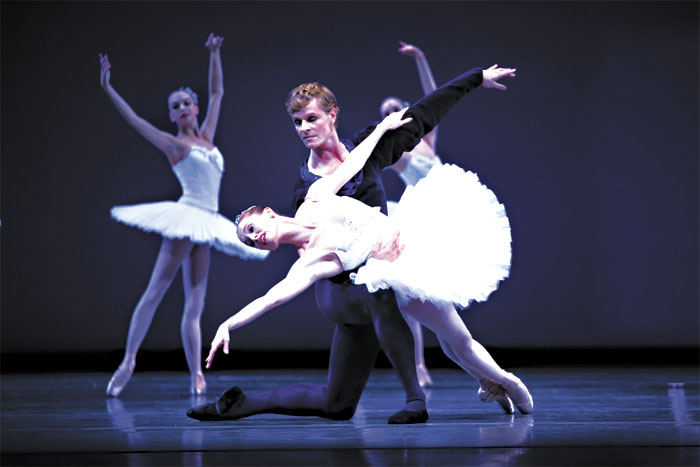In 1969, many choreographers were trying to make dances that were relevant in chaotic political times, but Jerome Robbins took a different approach. Dances at a Gathering is just what the title claims—a suite of dances for a group of people. But that is like saying the Statue of Liberty is a nice landmark in New York Harbor. Dances is close to being a perfect ballet, a just-right combination of music, movement, concept, and execution. It heralded the beginnings of the ’70s dance boom and marked the return of Jerome Robbins to ballet from the Broadway stage. And it astonished critics with its seamless combination of ballet technique and pedestrian movement—it was the most modest, natural-looking thing anyone had seen on a ballet stage up till then. And it remains so today.
From the opening, when a young man walks onstage, stoops to touch the floor, then, gradually, begins to turn walking into dancing, there is remarkably little artifice involved. Dancers come and go, sometimes alone, sometimes with a partner or in a little group. The Chopin score is full of waltzes and mazurkas, and we sometimes see that folk influence in a flexed foot or a beveled arm gesture, but this is not a reconstructed ethnic dance. In this natural world, dancers skitter across the stage like leaves in the wind, or at other moments surge back and forth like the tides. Robbins famously insisted there were no stories attached to these dances, but as we watch, we still fill in the blanks: Couples meet and part, some tempestuously; a group poses for an unseen photographer; a winsome flirt chases several men. From time to time, people stop and look up into what we think must be the sky, following something along the horizon.
In all three of the dances in this “Director’s Choice” program, Peter Boal’s performers bring an incredible combination of tenderness and skill to their dancing. Among the two casts I saw last weekend, the most poignant performance had to be Louise Nadeau’s as the flirt. Her imminent retirement makes her each moment onstage very fraught. But, true to the role, she’s charmingly blithe—as if there were no tomorrow on the calendar.
New to PNB is Christopher Wheeldon’s After the Rain, a tender pas de deux of suffering and endurance set to a sparse score by Arvo Pärt. The piece opens with two dancers standing spread-legged, braced for whatever happens next, swaying with apparent fatigue. Their movement has the even pacing of exhaustion, when you keep going because you don’t know how to stop. At the end, when the man slides underneath his partner and she relaxes on top of him, we are so glad they’ve finally found some rest.
The program closes with Francia Russell’s excellent staging of Balanchine’s crowded, rousing Symphony in C (composed by Georges Bizet), which brings 60 people onstage for the grand finale, which means 120 legs flashing in and out of position. The original title of the work, made for the Paris Opera Ballet in 1947, was Le Palais de Cristal, and it does indeed sparkle.








